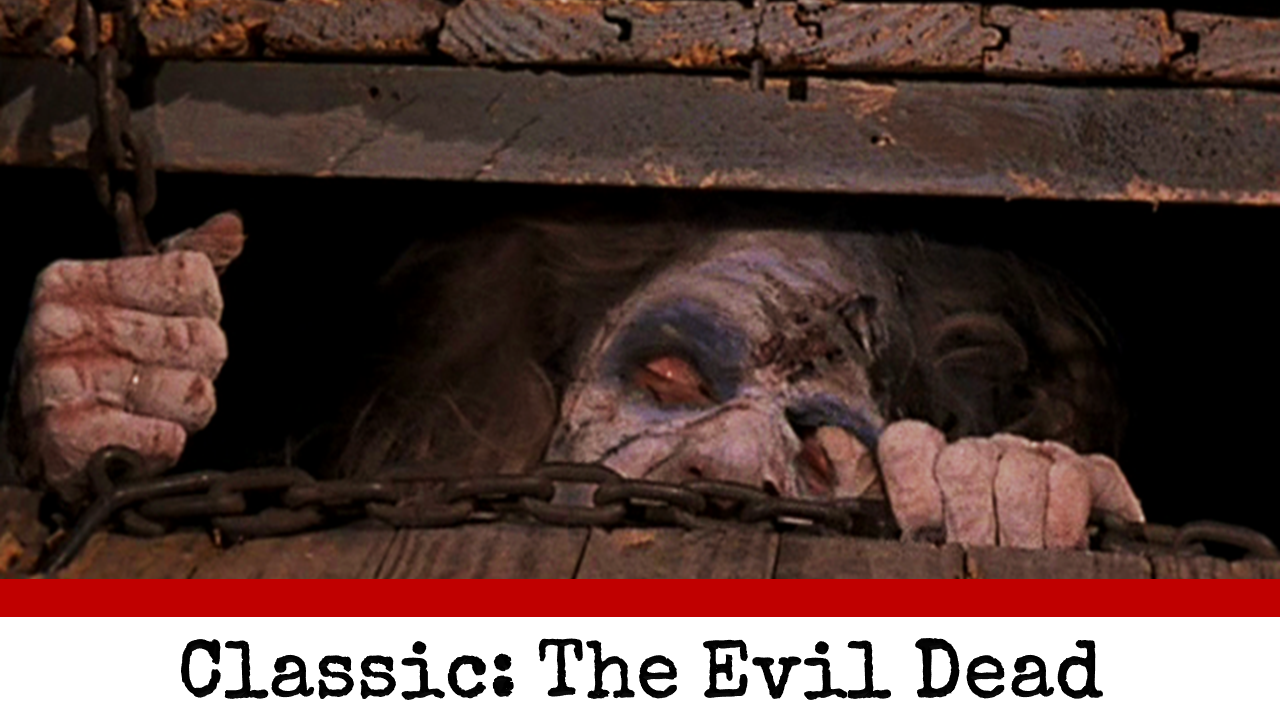Hi everyone, I’ve been writing a lot of horror lately, and trying to formulate what makes a good horror story. One of my all-time horror/comedy favourites is Sam Raimi’s 1987 Army of Darkness (yes, I’ll post a review on that one soon, trust me), but I realised I’ve never actually seen the original movie in this series, 1981’s The Evil Dead. This film is still considered a classic by lovers of the genre but what can it teach us about writing horror? Let’s take a look…
The Evil Dead follows a group of college students who are vacationing in a remote cabin in the woods, only to find that the cabin’s previous occupant, an archaeologist working on the mysterious Book of the Dead, had summoned demonic forces who reawaken to hunt down fresh victims. This is all pretty stock standard stuff for a horror setup – the remote location, a mysterious force and a group of expendables who are ill-prepared for the fight of their lives.
The opening setup to the film is surprisingly different to most stories of the 1980s. Instead of an introductory sequence that allows all the character relationships and overall plot goals to be outlined, Raimi gets right into the horror, setting up several moments of danger and uncertainty even before the car of college students gets to the cabin. It’s only after they are settling in around the 10-15 minute mark that the film fills us in on the backstory and relationships.
The characters are pretty basic, and there’s only two whose names I bothered to remember. The first is Cheryl, a young woman with psychic potential who is the first to be possessed by demons, spending the majority of the film peering up at the action from a locked cellar door. The second is Ash, the main character of the Evil Dead series. The main character dynamic here is the passive, subdued Ash, who spends most of the time taking a back seat to his more confident jock of a best friend, but as the bodies begin to pile up, it’s Ash who realises he has to be willing to fight to survive the mounting horror.
One of the things that really makes this film stand out after these years is the camerawork, and Raimi manages to get some truly unsettling shots using a shoe-string budget. The audience is placed in the viewpoint of the omnipresent demons, watching the action from beneath the floor or from the rafters, or from the perspective of the various possessed students hunting down Ash. The other stand out is the sound direction. When watching from the demon’s perspective, the scenes are filled with moans, creaks and whispers, yet when we switch back to Ash, everything becomes eerily quiet. It’s a simple but effective way to build tension.
That said, it’s not all perfect. Some of the practical and special effects are so crude they are laughable, and not even in a daggy “early episode of Dr Who” kind of way. It also needs to be said that the torture and rape of Cheryl at the hands of demons was needless from the plot point of view and comes across as gratuitous rather than revealing the horror of such a situation.
Building tension and mounting horror is the heart of this film, and this is where we can learn a lesson in our writing. As I said, the character development is basic, but that was never the point of this film. The reason this film is so effective at horror is that even as Ash grows in confidence and determination, he is always at least two steps behind a series of escalating, horrific and inescapable events. Each plot challenge, whether it’s fighting a zombie, or going into a haunted cellar, or seemingly fighting against the entire house itself, brutally stacks the challenge against our hero so that he’s beaten to a pulp by the end of the film.
This, for me, is good horror – to be beset by forces that can barely be understood, let alone fought against. It’s where the best-case scenario is to survive for a few hours, and perhaps only lose one limb in the process. Of course, that’s a scene from the next movie in the series, which I’ll post another day…
That’s it for now, please keep those suggestions of glorious classics and magnificent trainwrecks coming!

Leave a Reply